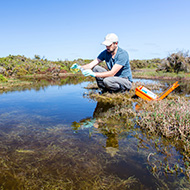Immunity mutation discovered in zoonotic bacteria
The study investigated the response of Staphylococcus aureus to macrophages.
New research has discovered a genetic mutation, which is helping zoonotic bacteria to develop a resistance to immune system defences and antibiotics.
Researchers from the Roslin Institute studied the response of Staphylococcus aureus, a major pathogen affecting both humans and animals, to immune cells known as macrophages.
The study aimed to discover how the bacteria was avoiding being killed by macrophages, and how it was adapting to immune responses.
Macrophages represent a significant component in the immune system response to S.aureus, and play a major part in disease outcomes. The researchers passaged strains of S.aureus along a macrophage cell line, where it collected mutations.
Exposure to the macrophages saw the bacteria undergo changes to its characteristics over time. Mutations meant that the bacteria developed many of its survival traits, including an ability to grow within immune cells and resist antibiotics.
However these advantages proved to be conditional, with the bacteria losing these mutations when grown in nutrient-rich conditions away from macrophages.
Further research revealed that the phenotype which was contributing to bacterial survival was a new type of small colony variant (SCV). These variants frequently contribute to more persistent, but less virulent, form of the pathogen.
These SCVs are often linked to chronic infections such as osteomyelitis and lung infections in cystic fibrosis patients. The adaptation has also led to the bacteria becoming more resistant to antibiotics, such as vancomycin.
The new model suggests that repeatedly exposing bacteria to macrophages could reveal the conditional way that bacteria adapts to specific niches.
It may also lead to a better understanding of how bacteria can evade the immune system, meaning scientists can consider potential treatment strategies for both humans and animals.
Dr Joana Alves, a research fellow at the Roslin Institute, said: “Our study uncovers a novel adaptation strategy by S. aureus in response to immune challenges, highlighting the remarkable ingenuity of pathogens in evading host defences.
“Our findings demonstrate the power of experimental models to unravel the complex mechanisms underlying bacterial adaptation during infection”
The full study can be found in the journal mBio.
Image © Shutterstock



 A set of international guidelines for disease surveillance in wildlife has been updated for the first time since 2015.
A set of international guidelines for disease surveillance in wildlife has been updated for the first time since 2015.